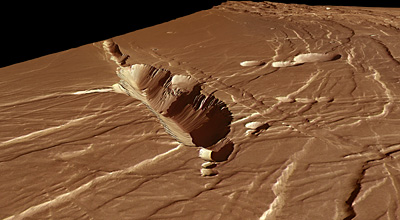The latest WOW from ESA Mars Express
Posted: Fri Nov 12, 2010 10:12 pm
The difference in elevation is over 3000 meters

in perspective

in perspective
APOD and General Astronomy Discussion Forum
https://asterisk.apod.com/

They say you can’t judge a book by its cover but, with planets, first impressions do count. New images show where complex fault lines in Mars’ Phoenicis Lacus region have resulted in terrain with a distinctly contrasting appearance.
Nineteenth-century astronomers were the first to see Phoenicis Lacus on Mars. They identified it as a dark spot, and thought that it resembled a sea. Now we know that it is not a body of water but the southwestern extension of the complex Noctis Labyrinthus system, which stretches away from the giant volcanoes of Mars’s Tharsis region.
The brightness of a surface feature is still the first thing planetary astronomers notice. It is known as the albedo and is partly determined by the composition of the surface material. For example, ice is more reflective than rock. The texture of the surface also plays a part, with rough surfaces reflecting less sunlight and so appearing darker than smooth surfaces.